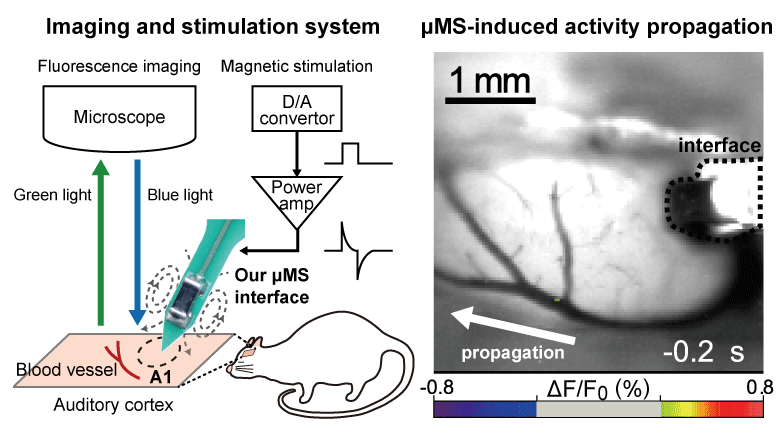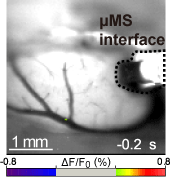
Electromagnetic stimulation is widely used to activate the peripheral and central nervous system and treat neurological disorders. However, they have several drawbacks such as their large device size and poor focality. Recent studies have reported that micromagnetic stimulation (µMS), which can activate neurons and neural networks via sub-millimeter inductors, has the possibility to overcome several limitations of conventional electromagnetic stimulation methods. Although most of the studies have examined the effects of µMS on single neurons, little is known about how µMS can affect brain tissue including local neural networks. Here, we propose a new, readily available implantable µMS interface. For the interface, we conducted numerical calculations and experiments to evaluate the physical characteristics including magnetic flux density, temperature, coil impedance, and structural integrity. Subsequently, we compared sound- and µMS-driven neural responses in the mouse auditory cortex in vivo using flavoprotein autofluorescence imaging to evaluate their response characteristics. Our experimental and computational evaluation showed that this µMS system could generate a sufficient stimulation intensity without device breakdown and severe damages to the brain. The in vivo experiments demonstrated that our system successfully activated neural tissue, and we observed activity propagation in local neural networks on the brain surface beyond restricted activation of single neurons. These results implied that µMS could selectively drive and modulate activity in local neural networks even at an in vivo tissue level as well as a single-cell level. Examining the relationships between stimulation parameters and response characteristics, we found that stimulation amplitude and pulse width were the two most important parameters to effectively induce neural activity. Therefore, our findings suggest that the proposed µMS device has the sufficient potential to drive the brain as an implantable magnetic stimulator for basic neuroscience and clinical applications.

